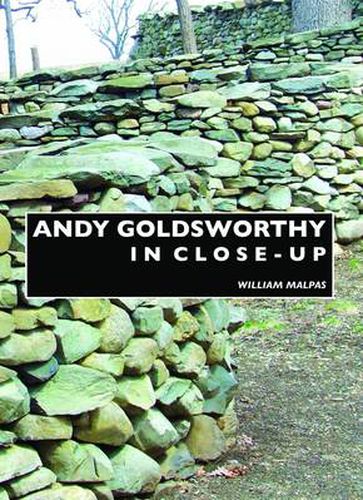Andy Goldsworthy in Close-up
William Malpas

Andy Goldsworthy in Close-up
William Malpas
This title is printed to order. This book may have been self-published. If so, we cannot guarantee the quality of the content. In the main most books will have gone through the editing process however some may not. We therefore suggest that you be aware of this before ordering this book. If in doubt check either the author or publisher’s details as we are unable to accept any returns unless they are faulty. Please contact us if you have any questions.
ANDY GOLDSWORTHY IN CLOSE-UP This book about the art of British sculptor and land artist Andy Goldsworthy considers each of his recurring motifs and forms and explores them in detail, with illustrations facing the text on each page. Includes many works in the U.S.A., and this edition has been completely updated. EXTRACT FROM THE INTRODUCTION One of the problems Andy Goldsworthy’s art addresses head on is the age-old relation between the ‘real world’ and art, between objects as they are in the everyday world, and objects as they are represented in art. Goldsworthy makes the viewer look again at nature: not just at the beauty of it, but at the multitudinous variety of forms in nature. His sculpture is a poetry of natural forms, in which notions of ‘representation’ are sidestepped, because he uses things ‘as themselves’ (the use of photography, though, brings in the politics of representation). The snowball in Snowballs in Summer (1989 and 2000) is not plastic masquerading as a snowball, but a real snowball. Similarly, the twigs and stalks and needles and pebbles folded into the snowballs are real. What’s amazing is the actuality of nature: the variety of forms, the way the branches twist, for instance. Andy Goldsworthy would have the viewer look closely at nature again. By using ‘real’ objects, Goldsworthy aims to demolish notions of representation and mediation. Instead of a picture of snow, one has in Goldsworthy’s art snow itself; rather than paint pebbles, or sculpt them in bronze, Goldsworthy uses real pebbles. Of course, there are problems with using objects as objects - Marcel Duchamp with his readymades confronted this problem. The issue is partly one of context: for, placed in a museum, so obviously as items to be studied, the natural forms become art. The snowballs may not be on pedestals, but they are perceived as art objects. The leaf sculptures are more obviously works of art, set on shelves, or photographed against paper backdrops, as bottles of perfume or Swiss watches are photographed for ads. If one is looking at a Goldsworthy sculpture in a book or a gallery, one is a already anchored in a gallery/ art/ aesthetic mode of viewing. If Goldsworthy’s sculptures are in a gallery, one sees them as art (and a particular kind of Western, bourgeois art, the sort of art that is exhibited in Western, bourgeois galleries). Carl Andre explored the relation between real and represented objects with his controversial pile of bricks. The sculpture was ‘controversial’ because the general public (whoever they are) perceived, via the media, that Andre had simply stuck some bricks into a gallery. Or rather, that (in Britain) tax-payer’s money had been used to purchase Andre’s bricks. A pile of bricks on a building site is…a pile of bricks. A pile of bricks in an art gallery is…sculpture. Context is everything here.
This item is not currently in-stock. It can be ordered online and is expected to ship in 7-14 days
Our stock data is updated periodically, and availability may change throughout the day for in-demand items. Please call the relevant shop for the most current stock information. Prices are subject to change without notice.
Sign in or become a Readings Member to add this title to a wishlist.

